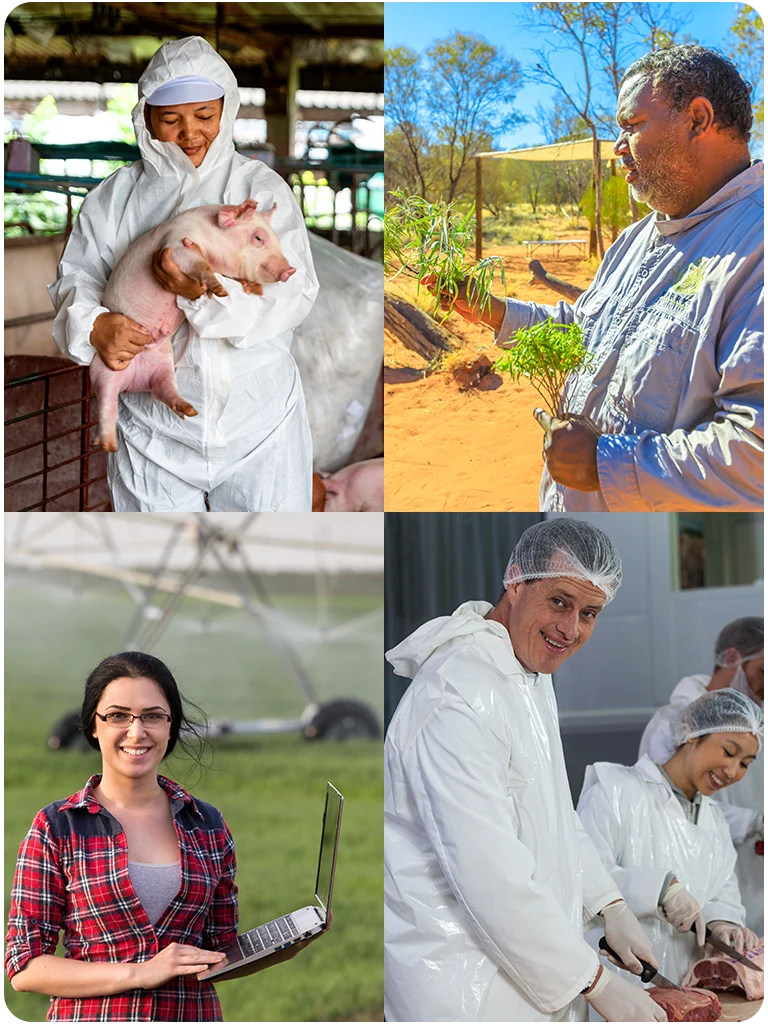The Australian Bureau of Statistics (ABS) maintains a standardised framework for storing, organising and reporting occupation-related information, called the Occupation Standard Classification for Australia (OSCA).
It is important that the OSCA is accurate, so it can be used to properly understand and support workforce needs. Occupations in the OSCA are included in the census to gather information about the workforce. This information is then used to inform decisions made by all levels of government in Australia, including about industry support, workforce strategies, taxation arrangements, apprenticeships and traineeships, skilled migration lists and more.
From ANZSCO to OSCA
The Occupation Standard Classification for Australia (OSCA) was launched by the Australian Bureau of Statistics (ABS) on 6 December 2024, replacing the Australian and New Zealand Standard Classification of Occupations (ANZSCO) for use in Australia. In New Zealand, Stats NZ released the National Occupation List (NOL).
The two countries’ classifications will maintain comparability, while allowing localised adaptations to better reflect the contemporary labour market and meet stakeholder needs.
The ABS, and partner agencies such as Jobs and Skills Australia, will transition to the OSCA with a staged approach. This means some key data collections and releases, such as the Australian Apprenticeship Priority List, will use the OSCA from January 2025, while others, such as the Occupation Shortage List (published every October), will adopt the OSCA for their next annual release.
The ABS will continue to engage and consult on the classification during 2025. Skills Insight is dedicated to improving workforce, skills and training outcomes for the industries we work with and will continue to support your input into the review of the classification system so that it accurately reflects your workforce and enables solutions to workforce challenges.
Learn more about OSCA on the ABS website.
Subscribe for updates
For updates on Skills Insight activities related to the OSCA and similar initiatives, you are welcome to subscribe to Skills Insight’s newsletter. Please select ‘General News’ as one of your subscriptions.
OSCA maintenance strategy
The ABS has recently published a maintenance strategy for the OSCA to facilitate publication of regular, timely updates.
The OSCA maintenance strategy provides a framework for updating the OSCA so that it reflects the Australian labour market and stakeholder expectations. It includes details about the types and frequency of updates to the OSCA, how stakeholders can engage and provide feedback, and how the ABS publishes updates.
Public consultation to inform the strategy was undertaken from 11 March to 4 April 2025.
At that time Skills Insight made a submission that emphasised the importance of aligning the OSCA with other national frameworks that inform government data use, and identified workplace safety as a key factor in prioritising future updates. The submission also stated our commitment to engaging with the ABS about the maintenance strategy at every stage.
A consultation summary is available through the ABS Consultation Hub outlining what was asked and responses received.
Skills Insight submissions to the ANZSCO review
Throughout 2023 and 2024, the ABS undertook a review of framework so it could reflect the contemporary labour market and better meet stakeholders’ needs (at this time the framework was called the ANZSCO). The ABS held four rounds of feedback on the classification of occupations, divided by focus area.
During each round of consultations, Skills Insight worked to support our stakeholders to provide input either directly through the ABS website or by contributing to a submission being prepared by Skills Insight. This included work to help stakeholders understand the classification of occupations and how it impacts them.
Our submissions were based on our interactions with stakeholders and the way the qualifications framework interacts with the classifications.
In addition to submissions to the ANZSCO review, Skills Insight provided the ABS with a statement encouraging the ABS to more deeply consider that occupation descriptions and skill levels should give greater credence to the relevance of VET qualification development and Australian Qualifications Framework (AQF) level identification. This is in line with industry intelligence collected by Skills Insight throughout rounds 1, 2 and 3 of the review process.
We are grateful to everyone who contributed to survey submissions made by Skills Insight on behalf of the industries we support. Your contributions helped inform four detailed and high quality submissions to the review process.
You can download the Skills Insight submissions below.
What is OSCA and why is it important?
The Occupation Standards Classification Australia (OSCA) is a method of classifying occupations within the Australian labour market.
The Australian Bureau of Statistics (ABS) assigns each occupation a title, description and skill level. By organising occupations into a classification system, researchers are able to collect, analyse and publish meaningful statistics about the workforce.
One place the occupation classification is used is the census, which is used by all levels of government in Australia to inform which job roles receive government support and the kind of support they need.
The data collected in the OSCA provides guidance for decision making related to:

View our ANZSCO review online information session
Round 3 of the comprehensive ANZSCO review featured occupations across most of the industries Skills Insight works with, including agriculture, horticulture, forestry, fishing, aquaculture, meat processing, racing and breeding, animal care and management, furnishing, textiles, clothing and footwear.
To help our stakeholders have their say on this round, Skills Insight hosted an online information session with input from the ABS.
The session included information about the ANZSCO, how it relates to you and how to provide feedback. There was also a Q&A section for stakeholders to ask questions of both Skills Insight and the ABS.
Although the session focused on round 3 occupations, it provides key insights into how the ANZSCO works that may be useful for providing feedback in the future.